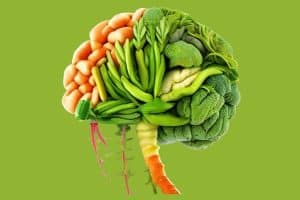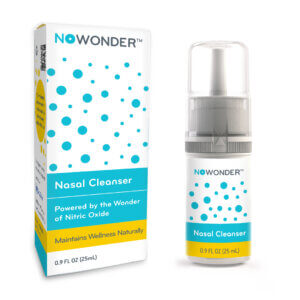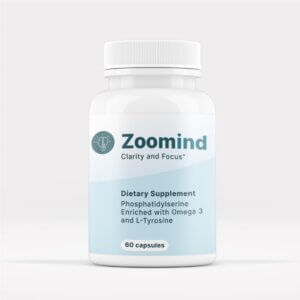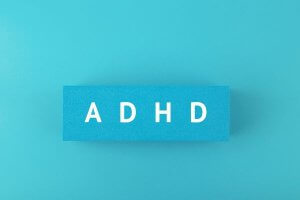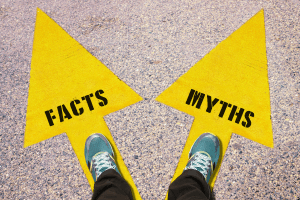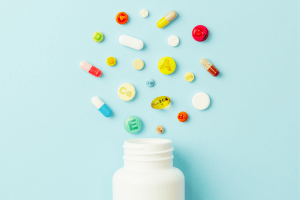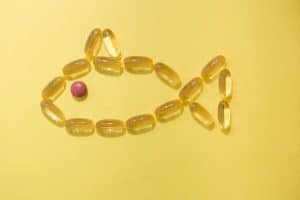
And for children with ADHD, that’s not just interesting science. It’s practical, everyday help. Parents have learned that children with ADHD can make life more complicated for all – for the kids themselves, for families, for teachers, and for friends. Focus, impulse control, emotional ups and downs – they’re part of the package. And while many kids do well with prescription medications, parents often ask the same question:
“Is there something else – something natural – that can support my child more naturally than meds?”
One answer that comes up again and again, with solid science behind it, is that growing children need a constant supply of brain food rich in omega‑3. And that doesn’t just mean feeding them spoonfuls of fish oil or serving meals rich in omega-3 fatty acids. All good diets require balance, convenience, affordability, and acceptability. Sadly, most heavily fish-oriented diets fail to meet all of these requirements, and that’s where simple dietary supplements like Zoomind come to the fore. Rather than switching a child’s whole food program around to allow for better uptake of one ingredient, adding a supplement like Zoomind lets the child enjoy their ordinary day-to-day diet and still get the necessary brain food that they need to offset any deficiencies that may be triggering bouts of ADHD.
What omega‑3 actually does in the brain
The basic facts about omega-3 fats 
When scientists talk about ‘fats,’ they don’t mean cooking grease or the extra pounds we worry about on our bodies. In nutrition, fats are one of the three main nutrients, along with proteins and carbohydrates, that the body needs to survive. Some fats are harmful if we get too much, but others are absolutely vital. More than half of the brain is composed of fat.
Our brains depend on a steady supply of dietary fat for their health and well-being. Omega‑3s are essential fatty acids (EFAs). EFAs are the building blocks of fat. “Essential” means our bodies can’t make them. They have to come from outside, through food or supplements.
What’s the role of omega-3 in the brain?
Omega‑3 fats are “good” fats that the brain actually needs to build healthy cells and keep signals firing smoothly. The two most important EFAs for the brain are EPA and DHA. Omega-3 is made up of both EPA and DHA:
- DHA (Docosahexaenoic Acid). It’s like the “construction crew” in brain building. DHA helps build brain cell membranes. It’s essential for learning, memory, and the long-term wiring of the brain.
- EPA (Eicosapentaenoic Acid). This one’s more like the “tuning crew” when the brain is up and running. EPA helps reduce inflammation and smooths out brain signaling, which can affect mood and behavior.
Omega-3 boosts the body’s supply of dopamine, which is required for neurotransmission. Many of the prescription medicines for ADHD also target dopamine production, which is essential for the brain’s functions of cognition, memory, and focus. Just about every aspect of neurotransmission (the movement of information from brain cell to brain cell) relies on omega-3s.
Why do we care about omega-3 for ADHD?
Research shows that people with ADHD often have lower blood levels of omega‑3s, especially EPA. And when they raise those levels, studies suggest attention improves, impulsivity decreases, and moods can feel a little more balanced. It’s not a miracle cure. But it’s like giving the brain better-quality fuel to run on.
Why diet alone usually doesn’t provide enough omega-3
In a perfect world, people would get all the omega‑3 they need from food. That’s how it was when mankind lived much simpler lives. Fatty fish like salmon, sardines, and mackerel, and a high level of daily dependence on nuts and seeds rather than protein-rich meats, carbohydrate-rich breads, and all the other benefits of modern living meant that the basic needs for omega-3 could be met with a normal diet.
In today’s world (at least in the Western world), eating enough fish to produce the relative quantity required, in the right proportion to carbs and protein, has become increasingly difficult. Add to that the other problems:
- Most kids won’t volunteer to eat fish, or they eat as little as they can – usually only with the promise of a thick slab of chocolate or a sugar-loaded ice cream to wash it down.
- Fish is expensive and not always practical for families on a budget.
- And even if your child loves fish, you’d need at least two servings a week of the right kind to meet the brain’s needs.
Seeds and nuts, like chia, flax, and walnuts, may sound like an easy swap. But they mostly contain ALA, a plant omega‑3. Our bodies can only turn about 5–10% of ALA input into EPA and less than 1% into DHA. That means you could sprinkle chia seeds on everything, and your child still wouldn’t be getting the omega‑3 their brain actually needs.
That’s why, for kids with ADHD, families often turn to supplements to boost the supply of brain food. They’re consistent, affordable, and realistic, and they avoid the “stigma” that a child with ADHD may feel when their friends or siblings mutter under their breath,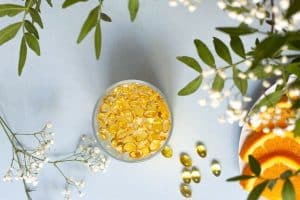
But what’s wrong with prescription medication? Why switch to omega-3?
Before we go deeper, let’s address something that often comes up in this topic: ‘What’s wrong with prescription medication for children with ADHD?’
The honest answer is – nothing is ‘wrong’ with it when it’s used appropriately. Medications like stimulants have been studied for decades. For many kids, they improve focus, impulse control, and behavior in ways that nothing else can. They help children succeed at school and feel less frustrated with themselves.
But medication for ADHD isn’t a miracle cure. Doctors haven’t yet found a way of addressing the cause of ADHD, and all current medications work to alleviate symptoms, and they are all short-acting. Stop taking the meds, and the benefits stop. That’s not the whole story. Some children experience side effects like appetite loss, trouble sleeping, or mood swings. Others simply don’t respond as well as expected. And some parents want to try complementary strategies first or alongside medication.
That’s where omega‑3 brain foods and other non‑prescription approaches come in. They’re not a substitute for medication if a child truly needs it, but they can be a valuable supporting tool that might reduce the dose required or make symptoms easier to manage overall.
Here’s where we go practical, because the supplement aisle can feel overwhelming.
The main types of omega‑3 brain food supplements
- Fish Oil
- The classic choice backed by the most experience.
- Comes from small cold‑water fish like anchovies and sardines.
- It’s the form used in most research studies on the benefits of omega-3 in ADHD.
- Algal Oil
- 100% plant-based, made from marine algae.
- Perfect for vegetarian or vegan families, or kids who hate any hint of “fishiness.”
- Provides the same ratios of EPA and DHA as fish oil.
- Krill Oil
- A newer option from tiny crustaceans.
- Easier to absorb, but the capsules have much less omega‑3 than the ones above.
- Multiple capsules each day are needed to get enough omega-3, and they’re expensive.
- Cod Liver Oil
- Traditional but not ideal.
- At the doses needed for ADHD, a child can end up with too much vitamin A, which can be unsafe.
- Dietary supplements like Zoomind
- Pure omega-3 supplements are hard to find, and in fact, there’s a better case made in terms of research for supplements that include omega-3 along with other essential vitamins, minerals, and organic compounds, in order to keep an optimal balance between the three main groups of dietary intake.
- Properly made supplements can be formulated more carefully to supply the designated doses of all ingredients than oils. When a company like Zoomind is making the supplements with the same level of production control and care as would be expected of a pharmaceutical manufacturer, the risks of contamination or improper labeling are limited.
- There’s no difference between taking an ADHD dietary supplement and taking any other medication. Kids don’t end up feeling “different” because they are having to swallow fish oils or eat strange foods.
What to expect from brain food
It’s important to set realistic expectations:
- Timeline: Omega‑3s don’t work overnight. This isn’t like a stimulant medication where you see changes in an hour.
- Most parents notice small shifts after 6–12 weeks:
- A child who’s a little calmer in the mornings.
- Fewer meltdowns over tiny frustrations.
- Slightly longer attention span.
- What they won’t do: Omega‑3s won’t “cure” ADHD or replace medication for kids who really need it.
Think of omega‑3s as part of an ADHD toolkit — alongside routines, behavioral strategies, school supports, and, for some, prescription meds.
This is what we now know:
- Omega‑3s aren’t a magic bullet. But they are brain food – safe, well-researched, and practical for families.
- They can’t fix everything, but they can make real, measurable differences in focus, mood, and behavior over time.
FAQs
How does Zoomind work?
Zoomind provides a pure source of essential fatty acids that the body needs for a wide variety of functions. Zoomind is specially designed to boost the volume of omega-3 fatty acids to the body, along with other essential building blocks that help brain cells stay flexible and communicate better.
If omega‑3 works, can we skip medication altogether?
In mild cases, omega‑3s might help enough to avoid medication, but most studies show they work best as an add‑on, not a replacement, for kids who need prescription support.
Are ADHD medications unsafe or addictive?
Stimulants aren’t addictive in the doses given for ADHD, and decades of research show they’re safe when used under medical supervision. Problems usually come from misuse or unsupervised use, not from appropriate prescribing.
Can supplements reduce the side effects of ADHD meds?
There’s some evidence that children on medication who also take omega‑3s may tolerate meds better, for example, feeling less irritable or needing a slightly lower dose. But that’s an area still being researched.
Should we try supplements before meds?
Some families do, especially if symptoms are mild. But for children struggling in school or at home, doctors often recommend starting medication sooner to avoid months of frustration. Supplements can still be part of the plan, whether you start them before, after, or alongside medication.
